Miler Lagos
and the Key to Demolishing Appearances
To “think” contemporary art demands considering the recapitulation of ideas and concepts. Post-modernity has placed in the spotlight the recycling of philosophies, stands and concerns that allow the contemporary artist to become immersed, in a more realistic and effective way, in the study of the issues that make up and define the social physiognomy of his immediate reality. It is a life experience that allows the creator to inquire into the human spirit during its evolution, an experience defined by that special open-minded interest that has led him to explore the unknown, to theorize on what has been discovered, and predict the unimaginable.

This lesson has been learned by Miler Lagos, a young, rebellious, and committed Colombian artist, with a solid formal background and a proven sensibility. His critical observation of social phenomena has led him to develop an art which dynamites the external appearance of objects and situations. Everything in his work looks just the way it is, but something makes us suspect that it is endowed with new features, not so easily recognizable; sometimes even unthinkable…It is an invitation to engage in a participatory reading, not in sterile contemplation: a new way of seeing things, not as one knows they are, but as they might be.
Miler is an artist eager for change, who has experienced an accelerated evolution, and who experiments with new forms of creation in all the inspirational paths he has trodden. Suffice it to visit his exhibition Home in New York to become aware of this. But appreciating the true dimension of Home, valuing its importance as a present-day proposal, somehow requires examining the artist’s complete body of work. For the fact is that all the concerns which have progressively defined the artist’s production over the course of more than a decade are crystallized in it.
As early as 1998, when he was still a student, Miler presented Columba, the photographic documentation of an art intervention in which a group of pigeons drew the silhouette of a Pre-Columbian tunjo (a gold doll), in an important public square. In this way he critically re-contextualized an image that represents the ephemeral manifestation of an endangered cultural past, in the midst of a panorama symbolically defined by the buildings of a political, cultural and religious character that frame the square. The result is a categorical yet subtle blow to the power structures, the same that the artist questioned in Lugares soberanos (2002) when he placed six marmoreal Ionian columns in the exhibition space. But these structures, defined since ancient times as architectonic elements that succeeded in transcending their technical condition and in becoming symbols of the most exquisite culture, of the most humanist philosophy and the most advanced thinking were executed in much more modest and declassed materials such as cardboard and formica, an example of the artist’s refined humor and of his concern with dismantling the traditional perception.
At a later stage came the balloons filled with concrete, in works such as Nivel Zen (2003) and Levedad insoportable (2005), and which reached their highest point in Attraction (2009). The lightness which characterizes a balloon has disappeared. In its place there remains the most absolute heaviness. Miler attempts not only to refute the deceiving nature of external appearance but above all to question the actual constitutive characteristics of the object, and our attitude towards them as spectators; he attempts to play with our surprise, he seeks a complicit smile once the trick has been discovered, but he also invites us to open up our minds, to develop an ability that leads us to question the conception we have of the world around us; he transforms us into thinking beings who avoid tautological association, uncritical gazes, limited inventiveness.
Abiding by this concept, the artist took a step forward in Los términos del juego (2006). The rubber balls filled with concrete are no longer a ludic article but the personification of two opposites characterized by different colors, which have been arranged in both ends of the installation. The theme of war is addressed in these works with the easiness of a child’s game, which makes it look almost ridiculous. To separate the two factions and highlight the absurdity of the subject a little further, there is nothing better than the blocks of printed paper featuring Leonardo da Vinci’s unfeasible catapult designs. This is an interesting transitional work that makes use of Miler’s previous experience with the balloons, but in which the heaps of printed paper predict his upcoming work.
Books, newspapers and paper sheets will now become the support of his new works, inspired by an environmentalist commitment which fosters a new way of recycling, a procedure which is conceived not only from the point of view of re-utilizing a material, but also from that of transforming into art an object conceived outside the field of art. In other words and in an inverted order: Miler Lagos recycles by carving symbolic images from nature, for which end he utilizes the residues of the manipulation society makes of nature. Perhaps this is the theme to which he has devoted most of his time of creation. What had originated with Cimiento (2007) and its sculpted trunks was also the basis for other projects such as the gigantic trees made with books which composed El papel aguanta todo (2008), or the four-meter high ceiba made from newspapers that he presented in Mexico under the title Semillas mágicas (2008). It is a concern which is not only channeled through the stacked paper sculptures, or through collages on the gallery walls; it is also a direct work with nature, like the one he has carried out in other public interventions such as Nacidos antes de… (2009), and Vista en Planta (2010), or in installations such as Cuarto menguante (2010).
And so the artist reaches his debut in New York. The works exhibited in Home are extremely simple but forceful: an igloo made of books, where it is impossible not to notice that the “blocks” of which it is composed address issues related to psychology and behavior, to history and politics; a video in which a water tank harbors a character, all alone in the sea, living the self-sustainable experience of isolation; or certain compositions which, from a distance, resemble abstract paintings, but which are actually collages made with the library cards of the books making up the igloo.
Home is, undoubtedly, a new proposal, but it is also the sedimentation of several years of uninterrupted work that submits to scrutiny the existential experience of the human being, the extremely personal interpretation of the meaning of concepts such as the individual, his home and the society in which he lives. Ultimately, “Home is where the heart is”, which means that the world is by now nothing but a great global village in which regional experiences dissolve to better merge with international trends, constituted on the basis of the new dynamics of collective experience.
MILER LAGOS (Bogotá, Colombia, 1973) pursued studies of visual arts at the National University of Colombia, where he graduated in 2002. He has been an artist-in-residence in several institutions, such as Location One in New York, USA, 2011; AB Projects in Toronto, Canada, 2010 and Gasworks Studios in London, United Kingdom, 2009. His catalogue includes more than a dozen solo shows in Colombia, Venezuela, Argentina, Mexico, Chile, the United States and Canada. He has also participated in different group exhibitions and events such as the Biennial of the Americas, Denver, Colorado, 2011; Philagrafika in Philadelphia, Pennsylvania, 2010; and the 2nd San Juan Poly/Graphic Triennial, Puerto Rico, 2009. His work is represented in the collections of the Banco de la República, the Museum of Antioquia, and the Gilberto Alzate Avendaño Foundation, all of them in Colombia; the Rubell Family Collection and the Ella Fontanals-Cisneros Collection, both in Miami, Florida, and the Institute of Puerto Rican Culture. Miler Lagos lives and works in Colombia.
-
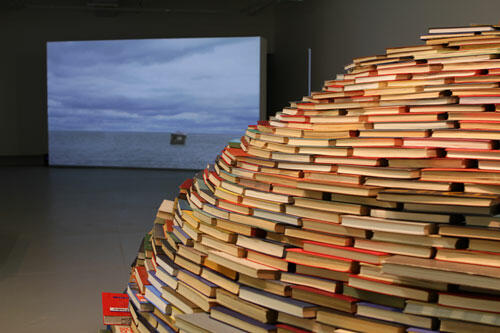 Installation view. Magnan Metz Gallery, New York, NY, 2011. Courtesy: Magnan Metz Gallery.
Installation view. Magnan Metz Gallery, New York, NY, 2011. Courtesy: Magnan Metz Gallery.
Vista de la instalación, Home. Magnan Metz Gallery, Nueva York, NY, 2011. Cortesía: Magnan Metz Gallery. -
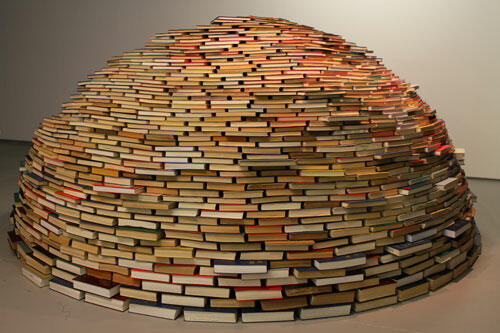 Stack of books. Magnan Metz Gallery, New York, NY, 2011. Courtesy: Magnan Metz Gallery. Home, 2011. Apilamiento de libros. Magnan Metz Gallery, Nueva York, NY, 2011.
Stack of books. Magnan Metz Gallery, New York, NY, 2011. Courtesy: Magnan Metz Gallery. Home, 2011. Apilamiento de libros. Magnan Metz Gallery, Nueva York, NY, 2011.
Cortesía: Magnan Metz Gallery. -
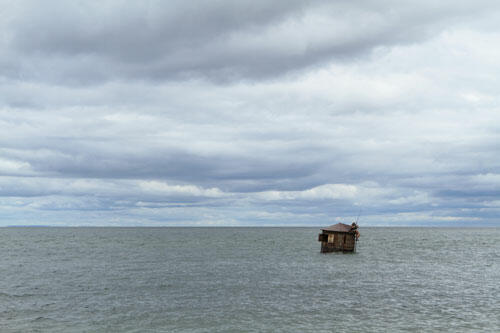 Photograph. Magnan Metz Gallery, New York, NY, 2011. Courtesy: Magnan Metz Gallery.
Photograph. Magnan Metz Gallery, New York, NY, 2011. Courtesy: Magnan Metz Gallery.
Fotografía. Magnan Metz Gallery, Nueva York, NY, 2011. Cortesía: Magnan Metz Gallery. -
 Concrete, steel and oilcloth, 25.6 x 9.8 x 5.9 in. Metal base 1 meter diameter in 1/8 sheet. Bogotá, Colombia. Levedad Insoportable, 2005. Concreto, acero y
Concrete, steel and oilcloth, 25.6 x 9.8 x 5.9 in. Metal base 1 meter diameter in 1/8 sheet. Bogotá, Colombia. Levedad Insoportable, 2005. Concreto, acero y
hule, 65 x 25 x 15 cm. Base metálica de 1 m de diámetro en lámina de 1/8. Bogotá, Colombia. -
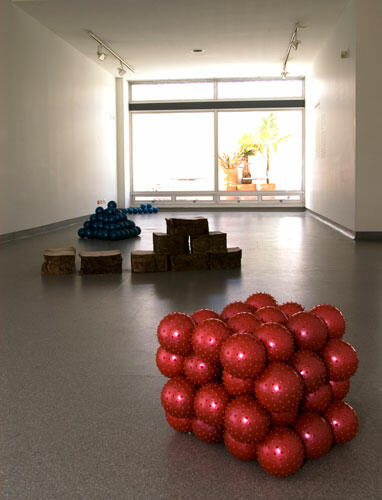 Rubber balls filled with concrete and blocks of printed paper, dimensions variable. Colombian French Alliance in Bogotá, Colombia. Courtesy: Magnan Metz
Rubber balls filled with concrete and blocks of printed paper, dimensions variable. Colombian French Alliance in Bogotá, Colombia. Courtesy: Magnan Metz
Gallery. Los términos del juego, 2006. Esferas de caucho rellenas de concreto y bloques de papel impreso, medidas variables. Alianza Colombo Francesa de Bogotá, Colombia. Cortesía:
Magnan Metz Gallery. -
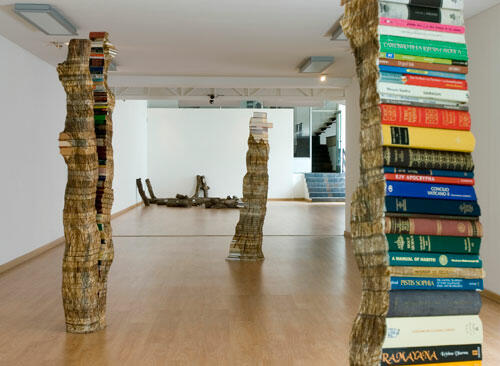 Carving on art books. Nueveochenta Arte Contemporáneo Gallery, Bogotá, Colombia. Courtesy: Magnan Metz Gallery.
Carving on art books. Nueveochenta Arte Contemporáneo Gallery, Bogotá, Colombia. Courtesy: Magnan Metz Gallery.
Talla sobre libros de Arte. Galería Nueveochenta Arte Contemporáneo, Bogotá, Colombia. Cortesía: Magnan Metz Gallery. -
 Multimedia installation, plants and photograph. Bogotá Chamber of Commerce. Antecámara permanent Network of Exhibition Halls, Kennedy Space, Bogotá, Colombia. Courtesy: Magnan Metz Gallery. Cuarto Menguante, 2010. Instalación multimedia, plantas y fotografía. Cámara de Comercio de Bogotá. Red de Salas de Exposición Antecámara, Sede Kennedy, Bogotá, Colombia. Cortesía: Magnan Metz Gallery.
Multimedia installation, plants and photograph. Bogotá Chamber of Commerce. Antecámara permanent Network of Exhibition Halls, Kennedy Space, Bogotá, Colombia. Courtesy: Magnan Metz Gallery. Cuarto Menguante, 2010. Instalación multimedia, plantas y fotografía. Cámara de Comercio de Bogotá. Red de Salas de Exposición Antecámara, Sede Kennedy, Bogotá, Colombia. Cortesía: Magnan Metz Gallery. -
 Courtesy/Cortesía: Magnan Metz
Courtesy/Cortesía: Magnan Metz


